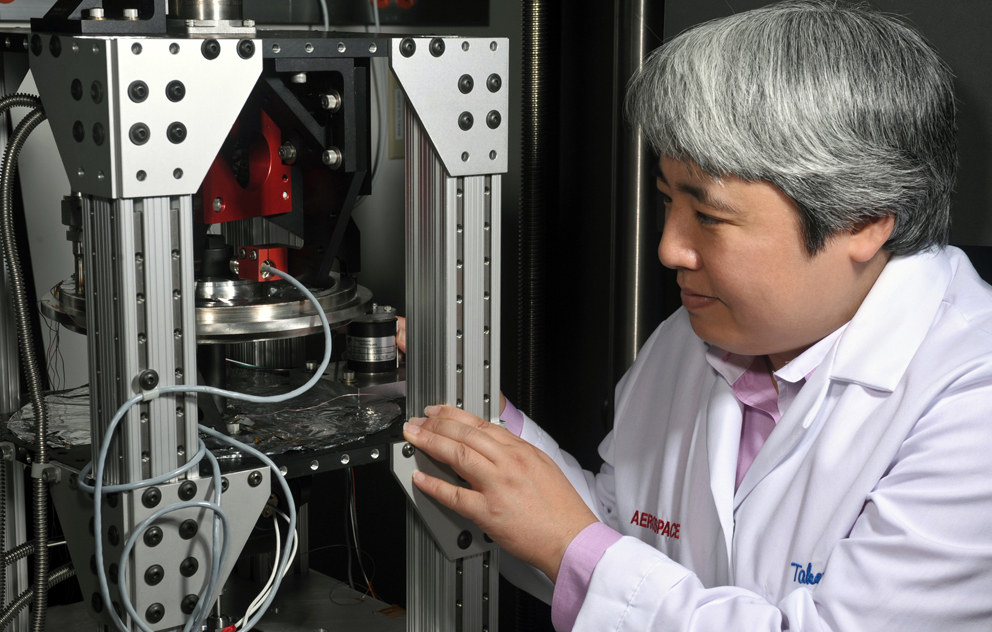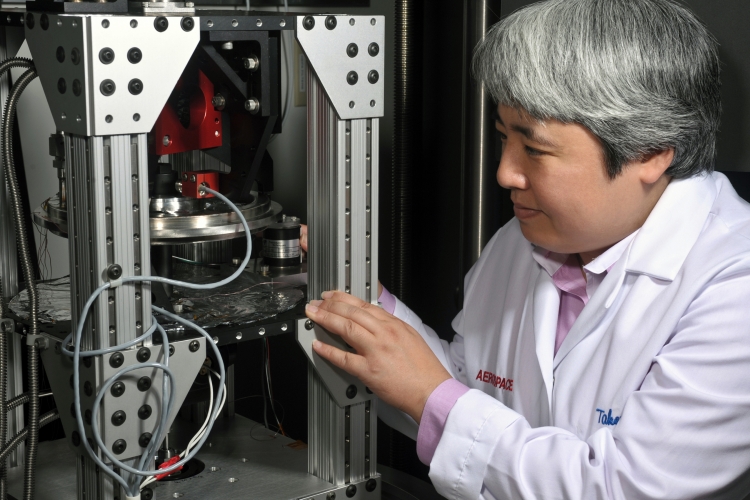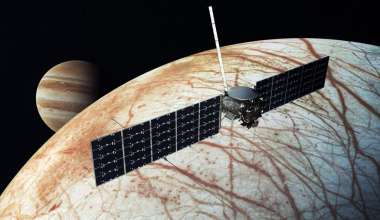Rotating mechanisms play a critical role on many spacecraft, assisting core functions such as attitude control and sensor pointing. At the heart of these complex devices are simple ball bearings, which must function smoothly and reliably—sometimes continuously, sometimes intermittently. These bearings—just like those in terrestrial applications—require a lubricant to reduce friction and optimize performance. However, bearings and their lubricants behave differently in space. That makes it difficult to determine just how much lubricant is needed—which is important, because maintaining proper operation of these components can have a direct impact on mission life. Moreover, operators generally can't reapply lubricants to a spacecraft in orbit.
A Smooth Collaboration
As explained by Dr. Peter Frantz of The Aerospace Corporation's Surface Science and Engineering Department, "With too little lubricant, space components will become depleted before meeting their required lifetime, resulting in premature wear and elevated drag torque due to dry sliding friction. With too much lubricant, components may suffer from high viscous drag, and precision instrumentation can have unacceptable torque noise."
Frantz was part of an interdisciplinary team of Aerospace researchers who applied their collective expertise in space mechanisms and surface science to help system designers better predict the effect of lubrication on ball bearings. The team constructed a specialized testing device and used it to evaluate the performance of bearings in a simulated space environment.
Dr. Yoshimi Takeuchi of the Mechanical Systems Department, working with Jerry Fuller of the Small Satellite Department, designed and built the test rig, which can measure thermal conductance and heat generation for bearings moving at constant speed as well as static bearings. "The hardware is highly versatile, having the ability to measure temperatures, conductance, and heat generation for a single bearing or bearing pair," Takeuchi said. "Heat input and output, as well as bearing temperatures, are measured across a spinning bearing under controlled axial loads in a vacuum environment," she explained. “Variables—including axial load, thermal environments, and rotational speed—can be controlled and varied to conduct parametric studies."
Takeuchi's team ran a series of such studies, and Frantz's group helped interpret the data, analyzing variations in lubricant distribution and its effect on drag torque and oil film thickness. The results indicate that the optimal amount of lubricant is not fixed for a given design, but changes with ball bearing speed, temperature, and load.

Practical Applications
These findings are particularly important for two types of mechanisms: high-speed spinning devices (e.g., attitude control wheels), and suspension systems for rotating devices that must be thermally isolated (e.g., infrared sensors). "Ball bearings in high-speed devices are susceptible to thermal run-away if heat generation is not managed appropriately, and viscous dissipation in the lubricant is the largest driver of heat generation," Frantz explained. "Thermal conductance across ball bearings must be known with precision to model the thermal characteristics of optical sensors, and oil distribution in the ball/race contacts have a dominant influence."
Historically, system designers have found it difficult to analytically predict the power consumption, heat generation, and thermal conductance of a moving mechanism. "Each of these factors depends sensitively on the quantity and distribution of oil in the contacts between the balls and races of the bearings that suspend the device," Frantz said. "With the data that we have collected, we are providing guidelines for analysts to estimate lubricant quantity and to predict how it will change with temperature, rotational speed, and bearing loads. This will enable design engineers to optimize the amount of lubricant for future missions and improve the design of attitude control systems."
Combined Expertise
Takeuchi credits the unique collaboration between the scientific and engineering staff for producing practical results that will benefit a wide range of space missions. "This highly successful program has resulted in 17 publications, unique test data that contractors have depended on for their designs, and a world-leading expertise within The Aerospace Corporation," she said. "The level of success could not have been accomplished without an interdepartmental and interdisciplinary Aerospace team spirit."









